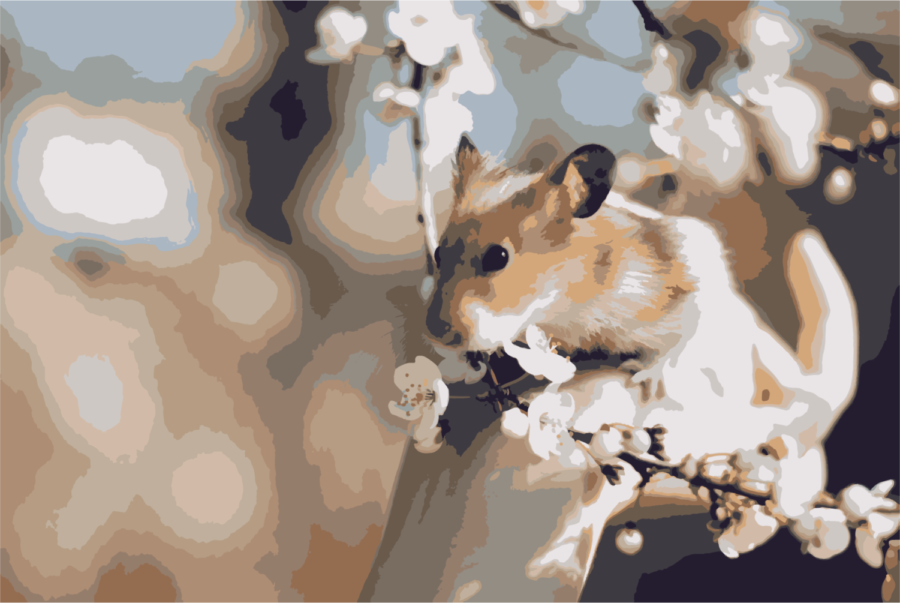Do larger pets hold a larger part of our hearts?
Does a pet’s size have anything to do with the emotional empathy people have for it? GBHS students share their “almost-killed” hamster stories.
Sophomore Sabrina Bell was around three or four years old when she had her “almost-killed-hamster” story. Bell essentially squeezed her hamster to death.
“It was my sister’s class pet hamster,” Bell said. “I (started) squeezing the hamster because I thought it was really cute.”
Freshman Maya McCarthy’s little hamster Blitz stuffed its mouth full until its last breath.
McCarthy and her brother were around eight years old with a newly gifted hamster after much “begging,” with their parents.
“I think my mom was looking for a vase to put the flowers in and she opened one of our cabinets and my hamster was dead in the corner with (a lot) of food in his cheeks,” said McCarthy.
While pets are well acknowledged to reduce stress and improve their owners’ wellbeing, pets come in all different shapes and sizes— and sometimes size plays a bigger role in the relationship than realized.
In a 2021 study, about 69 million households in the United States owned dogs, a larger pet, while only about 6.3 million households reported owning smaller pets, including hamsters.
Freshman Ruby Conger whose hamster, Shakira, died when she was younger
expressed her connection with her new cat was deeper than with previous pet Shakira.
“I think bigger animals are easier to take care of,” Conger said. “You know how to take care of a dog (so) it’s easier to form a connection with that because… they have more of a mental capacity as well to connect with you.”
The idea of people forming stronger connections with bigger animals has to do with what former veterinarian assistant Hannah Blackmore describes as “out of sight, out of mind.”
“With an animal that’s in an enclosure, I think it’s easier for people to just kind of put them out of their mind and not think about them,” Blackmore said.
Size plays a sizable role in the owner pet relationship dynamics.
“People tend to be more attached with animals that are bigger and like (more cuddly),” Blackmore said.
This “out of sight, out of mind” idea can adversely affect vulnerable hamsters because ignoring hamsters complicates health care.
“One of the big things with animals like hamsters is they have a high oxygen requirement, so they need to be in an enclosure where they’re getting a lot of oxygen so a lot of people will put rodents in like glass aquarium tanks.” Blackmore said. “If that’s not ventilated properly at the top, they can pass away pretty easily.”
Hamsters already have short lifespans of only one to three years compared to the average 10 to 13 year age span of dogs.
Part of the lack of healthy hamster care-and “almost-killed” hamster stories-can be attributed, Blackmore says, to misleading marketing.
“It’s due to the lack of information on proper rodent care. There’s a lot of things pet stores marketed for rodents, specifically hamsters that are actually really harmful to them… PetSmart and Petco have like little guides on how to take care of hamsters, and most of those are really inaccurate,” said Blackmore.
If these “almost-killed” hamster stories and the research are any indication, the small pet to owner relationship is short-lived. Bigger pets do indeed hold a bigger place in our heart.
Mahalina is a freshman and this is her first year on the Gazette staff.









